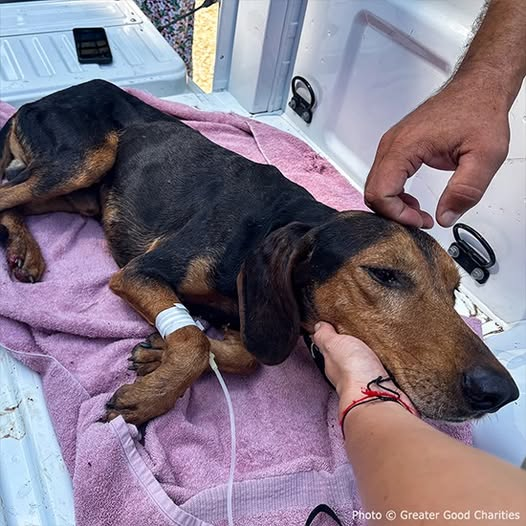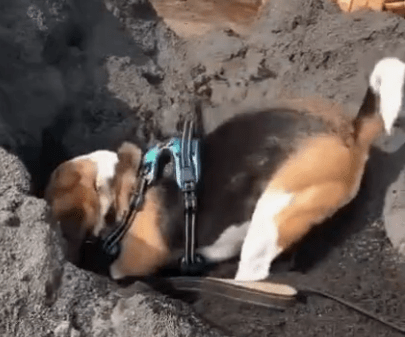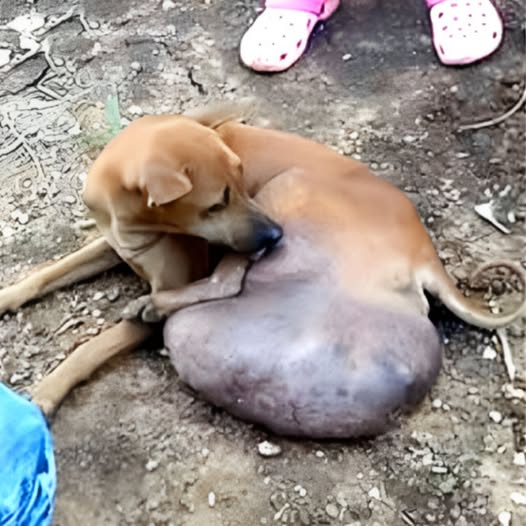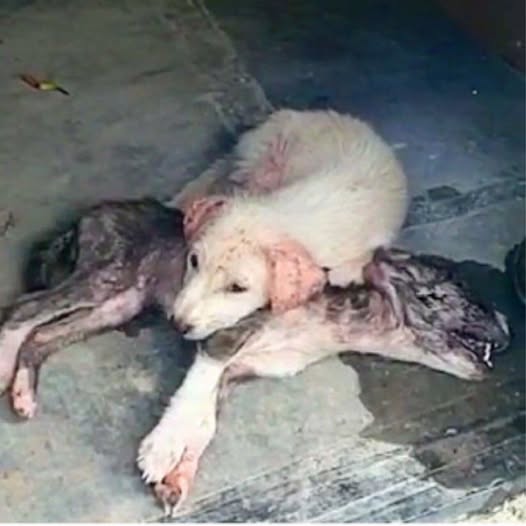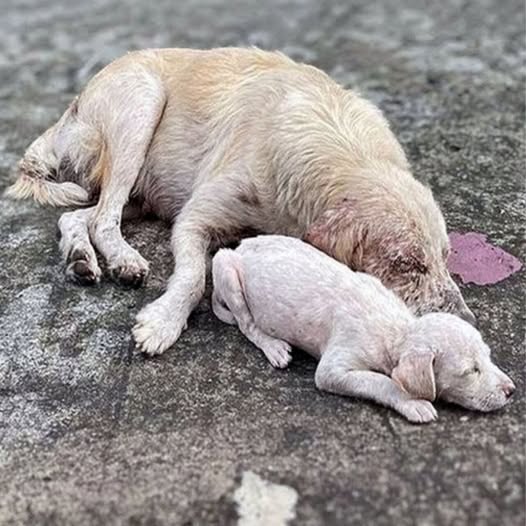Animals burned in devastating Greece wildfires are arriving at shelters in need of emergency care. The scenes are heartbreaking—dogs, cats, donkeys, and even wild animals limping in with singed fur, burned paws, and eyes clouded with pain. The fires that swept across vast areas of Greece did not just consume forests and homes, they also left countless animals fighting for survival in the aftermath. Shelters and rescue groups across the country have opened their doors, often overwhelmed by the number of suffering creatures brought in, but determined to give them a second chance.
Veterinarians working on the frontlines describe the crisis as one of the most intense they have ever faced. Many animals arrive dehydrated, their fur blackened by smoke, with skin blistered from the flames. Some collapse before reaching the shelter gates, their tiny bodies shaking from exhaustion and trauma. Volunteers carry them gently inside, where immediate medical attention is given—cooling their burns, treating respiratory issues from inhaling smoke, and carefully bandaging wounds. Every touch is meant to comfort, every drop of water given a chance at survival.
For the rescuers, these moments are filled with both heartbreak and determination. One volunteer described finding a dog hiding under the charred remains of a shed, its paws raw and bleeding, eyes wide with terror. The animal had stayed silent through the chaos, waiting for help that finally came. Another story emerged of a donkey led out of the flames by a group of locals who risked their own lives to save him, his mane still smoldering from the fire. Each animal carries its own silent testimony to the horrors of the wildfires.
But beyond the suffering lies resilience. In the shelters, a fragile but powerful sense of hope grows each day. Animals once trembling and weak begin to wag their tails, purr softly, or simply rest in safety without fear of the next wave of fire. The staff and volunteers work tirelessly, often without sleep, because they know each life matters. They provide not only food and medical treatment, but also comfort—stroking burned fur, whispering soothing words, and staying close so the animals know they are not alone anymore.
The emotional toll on the caregivers is immense. Many of them have cried while treating injured animals, unable to contain the sorrow of witnessing so much pain. Yet they continue, because giving up is not an option. The shelters run on donations, supplies, and the spirit of community. Social media has played a crucial role in raising awareness, as images of burned but hopeful animals reach the world. People from across Europe and beyond have sent funds, medicines, and even offered to adopt the survivors once they recover. These gestures prove that compassion has no borders, and that tragedy can unite people in the name of kindness.
Recovery, however, is a long road. Burn injuries require weeks, sometimes months, of care. Respiratory problems caused by inhaling smoke can linger. Some animals are left blind or permanently scarred. But despite these challenges, many are finding new homes with families who see past the scars and choose to love them all the more for their courage. Adoption stories are pouring in—dogs once found collapsed near the fire line now sleeping safely on beds beside their new owners, cats once burned and hairless now curling in laps, donkeys once terrified now walking peacefully in green pastures.
These stories of transformation reveal the extraordinary resilience of animals and the deep bonds they can form with humans when given a chance. They remind us that even in the ashes of destruction, life can bloom again. A dog with a bandaged leg learning to run, a cat with half-burned whiskers beginning to play with a toy for the first time since the fire—each small step forward is a victory.
What is also clear is the lesson these wildfires leave behind. As climate change intensifies, fires like these are becoming more frequent and more destructive. Animals, often overlooked in disaster planning, bear a heavy toll. Rescue organizations are calling for stronger policies to protect them—more evacuation plans for pets and livestock, better resources for shelters, and increased public awareness of the importance of not abandoning animals in emergencies. The tragedy of the wildfires serves as a reminder that animals are not just victims of nature’s fury but living beings deserving of safety and compassion.
The shelters are now filled with both sorrow and joy. Walking through them, one might see a puppy whose ears were singed by the fire, now dozing peacefully after a meal. Next to him, a cat recovering from burned paws stretches gingerly, testing the floor before settling back down. In another corner, a horse rescued from the blaze leans its head against a caretaker’s shoulder, trusting again despite the terror it endured. These quiet scenes of recovery carry a beauty that words can hardly capture.
Volunteers often say that it is the animals who give them strength, not the other way around. Watching a burned dog wag its tail after days of pain, or seeing a kitten take its first steps on healing paws, brings renewed energy to everyone involved. These creatures, despite unimaginable suffering, choose life, hope, and trust. That choice inspires humans to keep fighting for them, to never let despair win.
International attention has not only brought donations but also sparked a broader conversation about humanity’s responsibility toward animals in times of disaster. Organizations are now coordinating with fire brigades, local authorities, and even international groups to ensure that rescue efforts are faster and more effective in the future. The hope is that no animal will be left behind, trapped in barns, tied in yards, or lost in the woods without a chance to survive.
As days turn into weeks, the number of animals slowly recovering rises. Some will bear scars forever, physical reminders of the wildfires’ cruelty. Yet those scars also tell stories of survival, courage, and kindness. Families who adopt them do not see damaged animals; they see heroes who fought through the flames and came out alive. These animals become symbols of resilience, teaching everyone who meets them about the strength of spirit and the healing power of love.
The wildfires in Greece will be remembered as one of the nation’s great tragedies, but within that tragedy lies a different kind of memory—one of compassion. Strangers coming together to carry cages, doctors working through the night to save lives, children donating their pocket money to buy food for injured animals—these acts remind us that humanity shines brightest in its care for the most vulnerable.
Every life saved from the ashes carries hope for a better tomorrow. The animals burned in Greece’s wildfires may have endured horrors beyond words, but their journey of healing proves that even after devastation, light can return. They are more than survivors; they are reminders of what is possible when love and courage come together. And as they find safety in shelters, comfort in human hands, and eventually happiness in forever homes, they show the world that life, no matter how fragile, is always worth saving.
